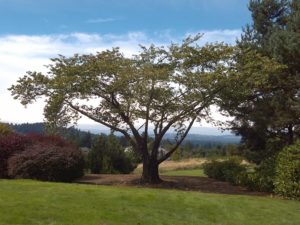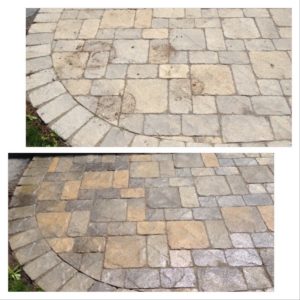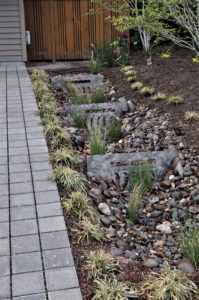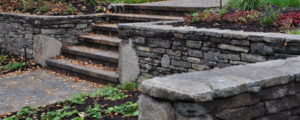Winter Maintenance Tips to do Now
By mid-winter, landscape maintenance is a distant memory, and thoughts of summer fun in the backyard are fleeting at best. And it’s no wonder, February in the Pacific Northwest tends to be chilly, windy, and wet. Some years, we’ll even get snow. So, no one will fault you if yard maintenance is not top of mind. But it should be, and here’s why: a little TLC mid-winter will save you time and money come spring!
Here is our winter must-do checklist for a healthier and more care-free yard and landscape this spring and summer.
Clear away debris. Even if you did a thorough yard cleanup in the fall, chances are, leaves and other debris have collected in your lawn, flower beds, and water features. Left unchecked, this natural refuse will provide ideal breeding grounds for pests and disease, and may clog water features and irrigation systems.
Prune dormant trees and shrubs. Winter pruning gives limbs a chance to heal from cuts before warmer weather insects or disease pathogens emerge. Pruning while plants are dormant inhibits new growth stimulation until spring when conditions are ideal for growing. One note of caution, though—hold off on pruning spring-blooming trees and shrubs until after they flower, or you will be removing the buds.
Cut back ornamental grasses. Trimming ornamental grasses to a few inches above the ground helps insulate roots and provides a good base for the new shoots to grow through. It also helps to tidy up your landscape and prevents dead grass debris that’s blown off in windstorms from accumulating in your yard.
Test and amend your soil. The soil in your lawn and flowerbeds provides the nutrients your plants and grass need to grow and remain strong. Testing your soil in winter will give you time to apply what is needed for a healthier, thriving landscape when the growing season begins.
Treat your lawn for moss. Your lawn and landscape may be dormant, but moss doesn’t die back in the winter. In fact, colder weather is when moss releases spores. So, stamping it out now will help prevent new moss from getting a foothold.
Spread Mulch. After you have given your yard a good debris clean-up and tested and amended your soil, add a fresh layer of mulch. Winter mulching helps protect plants from harsh elements and also serves to suppress weeds before they have a chance to sprout.
Inspect and repair hardscapes. Settling over time is a natural occurrence with any hardscape, but is not always noticeable, especially during the growing season when plants are at their fullest. Winter offers less obstructed access to inspect and assess the health of structures. Winter rains also expose low points in patios or walkways where puddles are accumulating. Pay attention to these low points as they may need to be leveled to prevent future damage. If the spacing between your pavers has also settled, you may need to resand and refill the gaps.
Clean and inspect lighting fixtures. Just like any other feature in your yard, regular cleaning and maintenance of lighting fixtures will extend their life. Clean lenses, replace burned out bulbs and check for any loose fixtures. You may also want to consider switching from halogen or incandescent to more efficient LED lights. Fixtures can be retrofitted and upgrading to LED will mean you can go from replacing bulbs every couple of years to only needing to replace them every 10-15 years. For even greater efficiency and energy savings, you can also install timers that can adjust to seasons, or move to a smart system that ties into your home or even your smartphone.
Give your irrigation system a tune-up. Winter is a good time to inspect your irrigation system and make any necessary repairs before you need to turn everything back on in the spring or summer. You should also run a backflow test, which is required annually by local municipalities, and ensures backflow prevention devices are functioning properly and dirty water does not enter your clean water supply. Landscape East & West offers Premium Water Management Services (PWMS) which includes these tasks and provides year-round maintenance to ensure your irrigation system is always functioning properly.
Upgrade your irrigation system. If your irrigation system could use an overhaul or an upgrade to a

more efficient system, winter is a great time to get this done. Then when the growing season starts, you’ll be ready. Waiting until spring or summer to get started also means you will likely be faced with long lead times to schedule contractors.
Inspect and clean water features, and test water pH. Remove any debris that has collected to prevent pumps and filters from clogging. Clean filters and remove any dirt or debris. This will help prevent overheating and will extend the life of your pump. If there are signs of algae growth and your water feature needs cleaning, don’t use bleach. Rather, use a general algaecide, one that is safe for frogs and fish as it will also be safe for birds. If the water is at the proper pH, you won’t get as much algae growth. Checking the pH every other month is a good rule of thumb.
Here in the Pacific Northwest, temperatures don’t typically drop low enough to warrant draining, so for most water features it’s best to keep them full and running. For water features that aren’t meant to be run year-round, it’s possible to simply shut them off or pull the pump from the system to avoid costly repairs during winter. If you encounter a hard freeze, you can remove ice when it’s blocking the pump or water outlets. A heater can also be installed in your pond for temporary use.
Start planning landscape projects now. Winter is a great time to get a jump on yard make-overs, especially if you will be hiring any designers or contractors. Get on their schedule now so you can be wrapping up projects and have your yard ready for summer fun when the season arrives.
The experienced designers and technicians at Landscape East & West can help plan and install your landscape, whether it is a completely new installation or an update to what you already have. Or we can simply make your existing landscape a little more worry-free with efficient irrigation systems and improved drainage, lighting, and other enhancements. Contact us today to get started!

